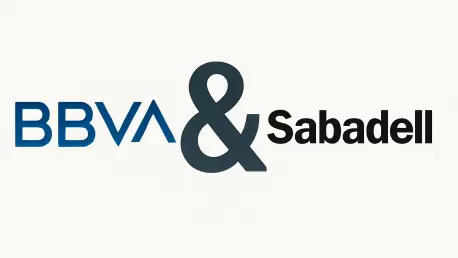In the heart of Spain’s financial sector, a seismic shift is brewing as BBVA, a titan of banking, pushes forward with a bold takeover bid for its rival, Banco Sabadell. This potential merger isn’t just another corporate maneuver; it represents a defining moment for the industry, with the power to reshape market dynamics and competitive landscapes. With BBVA recently revising its synergy projections amid regulatory constraints and strategic pivots by Sabadell, the stakes have never been higher. This market analysis dives deep into the evolving narrative of this acquisition, examining the trends, data, and forecasts that could determine whether BBVA’s recalibrated expectations will seal the deal. The significance of this transaction extends beyond the two banks, offering a lens into the future of banking consolidation in Spain and across Europe.
Unpacking the Market Dynamics and Merger Projections
Regulatory Constraints Reshaping Financial Forecasts
The Spanish banking sector is under intense scrutiny as BBVA navigates a labyrinth of governmental regulations in its pursuit of Sabadell. A key hurdle is the mandate requiring both banks to operate independently for at least three years, with a possible extension to five. Initially, BBVA forecasted cost synergies of approximately 850 million euros within two years post-merger, but a recent filing with the Spanish stock market regulator, CNMV, revealed a downward revision of these figures, though specific numbers remain undisclosed. This adjustment reflects the delayed timeline for realizing efficiencies, as operational separation stifles immediate cost-saving measures. Such constraints not only challenge BBVA’s financial projections but also signal to investors a prolonged wait for returns, potentially impacting market sentiment toward the deal.
Sabadell’s Strategic Moves Altering Deal Attractiveness
Adding complexity to the merger landscape is Sabadell’s recent divestment of its British unit, TSB, to Santander for a substantial one-time cash payment of 2.5 billion euros (roughly $2.9 billion). This transaction, approved by shareholders, significantly bolsters Sabadell’s balance sheet but shrinks the asset portfolio BBVA would inherit. The reduced scope could affect integration strategies and long-term value creation, forcing BBVA to reassess the deal’s appeal. Since BBVA’s synergy estimates hinge on publicly available data, there’s an inherent risk of overlooking hidden liabilities or operational mismatches. This mirrors patterns seen in prior banking mergers, where divestitures often necessitate a recalibration of expected benefits and risks by the acquiring entity.
Operational Risks and Market Perception Challenges
Beyond regulatory and strategic shifts, BBVA faces a spectrum of operational hurdles that could sway market perceptions. Merging two large banking entities involves harmonizing disparate systems, staff, and customer bases—a process ripe with potential for litigation, customer churn, and internal friction. BBVA has acknowledged that any delays or failure to finalize the takeover could dent its share price and strain stakeholder ties. Industry analysis suggests that such mergers frequently unearth unanticipated challenges, from cultural integration issues to unforeseen costs. This uncertainty underscores the delicate balance BBVA must strike between pursuing aggressive growth and safeguarding its market reputation during this transformative phase.
Emerging Trends in Banking Consolidation
Zooming out to broader market trends, the BBVA-Sabadell saga highlights a growing wave of consolidation within the banking industry, driven by the need for scale and efficiency. Across Europe, regulatory bodies are tightening oversight on mergers to ensure competition and systemic stability, a pattern likely to intensify. Simultaneously, the rise of digital banking and fintech innovations is reshaping how synergies are conceptualized, moving beyond traditional cost reductions to emphasize technology-driven growth. Market forecasts indicate that if BBVA successfully navigates these headwinds, the merger could catalyze similar deals in Spain, setting a benchmark for balancing regulatory compliance with strategic ambition in an increasingly digital financial ecosystem.
Reflecting on Insights and Charting the Path Forward
Looking back, this analysis of BBVA’s revised synergy estimates and persistent pursuit of Sabadell reveals a multifaceted market scenario shaped by regulatory delays, strategic divestitures, and operational complexities. The downward adjustment of expected cost savings highlights the immediate financial impact of governmental conditions, while Sabadell’s sale of TSB underscores the fluidity of merger dynamics. For stakeholders, the journey ahead demands vigilance in tracking regulatory updates and integration milestones as critical indicators of success. A strategic focus on leveraging technology to ease operational challenges emerges as a vital recommendation, alongside transparent communication to sustain investor confidence. Ultimately, the unfolding of this deal offers a blueprint for navigating future banking consolidations, urging industry players to prioritize adaptability and long-term vision in a rapidly evolving market.









